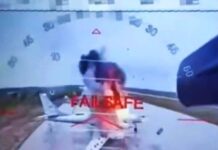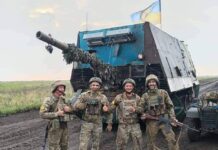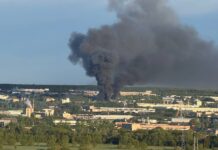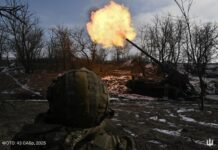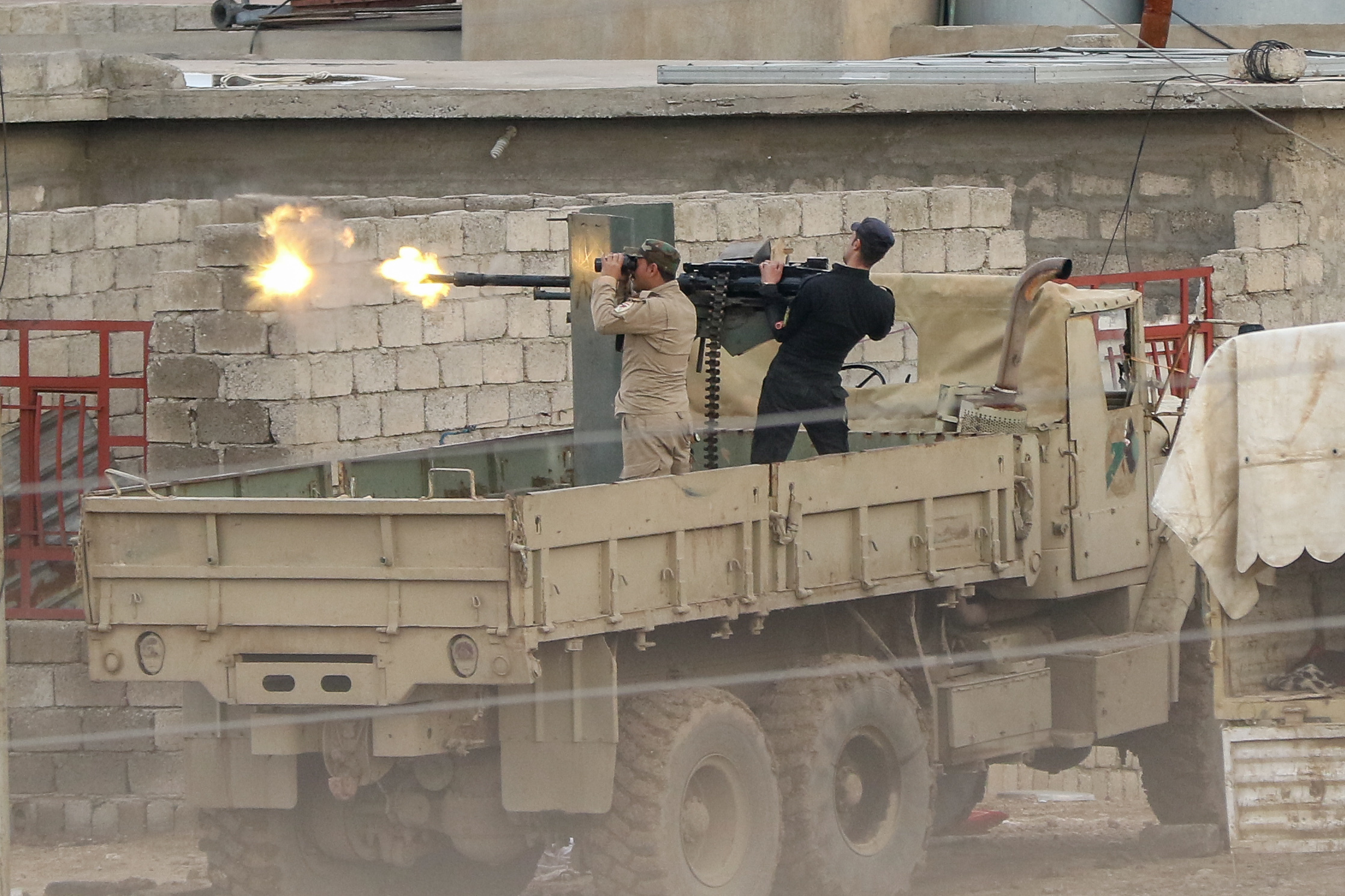
Holding ground: A review of modern field defences
Sam Cranny-Evans
When it comes to holding ground, some military fundamentals never change. From trench systems to urban fortifications, this analysis examines how armies are protecting their forces in an era of contested logistics and persistent surveillance.
“It takes a land force to defeat a land force,” Amos Fox, a retired US Army officer and now lecturer in political science at the University of Houston told this author in November 2024. We were discussing emerging trends in C4ISR and the West’s apparent obsession with deep-strike capabilities. “If territory is the question, then a land force is the answer, and the bigger the land force the better,” he added, before moving on to discuss what infantry will tend to do when subjected to air strikes. “They will just go into cover, or underground, they’ll be more aware of things flying overhead,” he said.
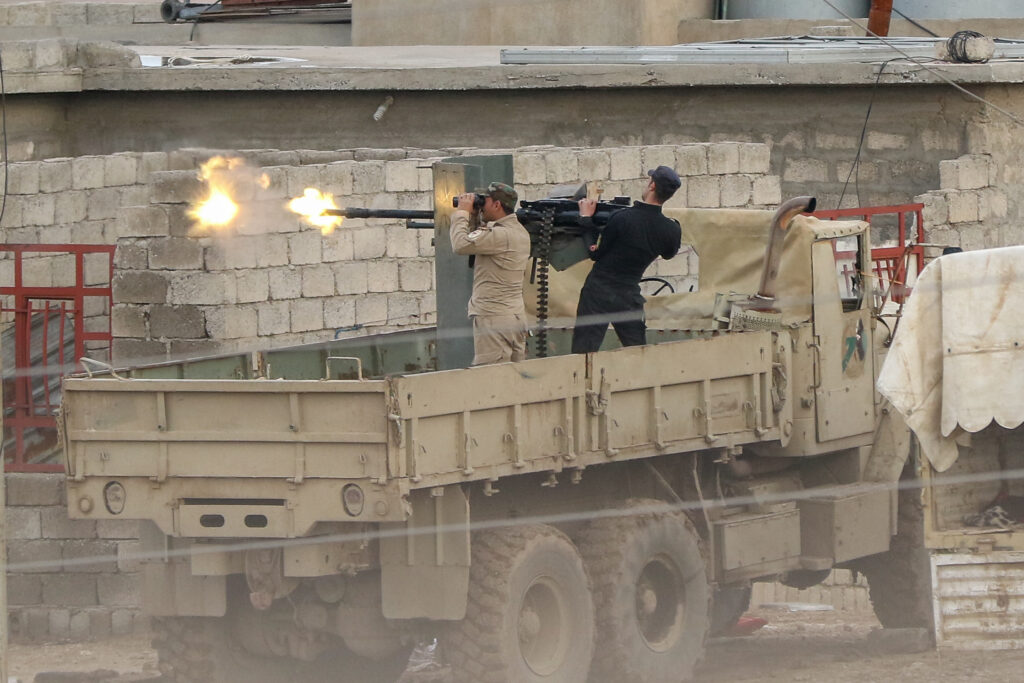
So, if land forces are key to defeating another land force, then field fortifications and defences are a necessary and critical component of land warfare. This article will explore the topic of field defences, and the factors that shape their use and effect.
Contested logistics
In the 2020 Nagorno-Karabakh war, both the Azeri and Armenian forces fought from a series of trenches and earthworks prepared over many years. The Azeri success in defeating Armenia’s air defences, or perhaps Armenia’s failure to hold Azerbaijan’s Bayraktar TB2s and various strike assets at bay, led to hundreds of videos showing precise drone strikes on Armenian forces. There were two broad categories – frontline and rear echelon strikes. The rear echelon strikes are worth pausing on for what they indicate about land warfare and the use of trenches and field fortifications.
In Nagorno-Karabakh, Armenian logistics were laid bare to Azeri drone strikes, leading to extensive losses of forces, equipment, and supplies before they ever reached the frontline. This is an immense challenge for forces in contact with an enemy since a lack of supplies like ammunition means that you cannot fight effectively. Losing reserves before frontline forces can be rotated or replenished may set the foundation for the defeat of those forces holding the trenches. Martyn Beardsell from B+SL, an engineering and design company in the UK, believes this is one of the primary challenges facing modern field logistics. “Being an infantryman is a really scary place, I think scarier than it’s ever been. If a fortification is in place before the fighting starts, then it will be targeted from the outset and, after the fighting starts you may end up in a logistics-denied environment,” he told ESD in an interview on 15 January 2025.
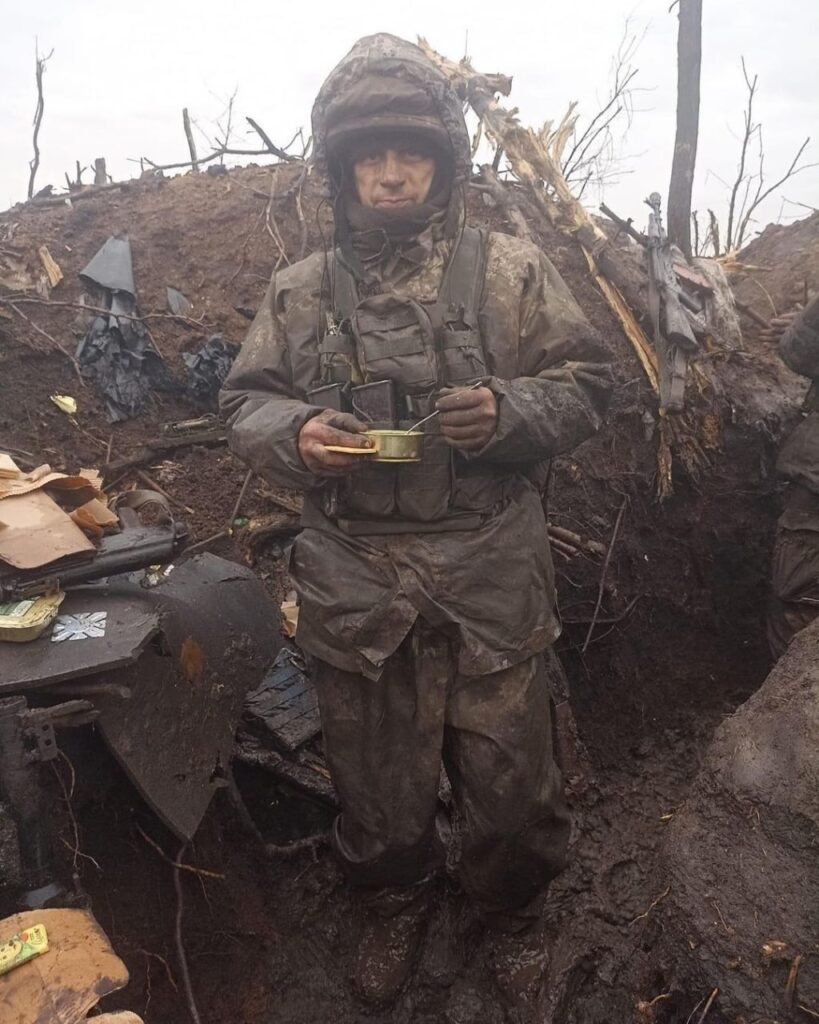
This is important to note because building field defences requires supplies and materials. If the defences are not established when the fighting starts, then they are unlikely to take on any form other than that which the soldiers can dig themselves.
A shovel is your best friend
In September 2022, shortly after Russia had begun mobilising its population to resource the war in Ukraine, but before drones had become prolific, Aleksandr Kots, a Russian war journalist, wrote an article advising new recruits on what to expect once they reached Ukraine. “Your main friend in positional battles will be a shovel…The deeper and better you dig into the ground, the safer you will be to wait out the artillery attacks,” he told them.
At the time, Russian reports indicated that as much as 90% of casualties were caused by artillery, which means that trench digging, and digging deep is a relatively smart move. Martyn Beardsell noted however that: “Trench digging is a thing of diminishing returns: you can dig a hole and go as deep as you dare, shore the sides up with plywood and you’re pretty safe. But to do anything more than that, the cost sky-rockets.” Choosing to do more than this should be informed by several factors: Soil type, the nature of the threat, and the time and resources available.
The goal of digging a trench – be that for a vehicle or infantry – is to place the centre of mass below the surface of the ground, out of harm’s reach. In Ukraine, for much of the war, the primary threat has been artillery fire, which primarily produces lethal effects through fragmentation, rather than the energy released by its explosion. Each artillery shell is made of a steel casing filled with up to 30% of its weight in an explosive like RDX. The more energetic the explosive, the better, however, this tends to increase cost. More energy is better because it moves the resulting fragments at higher speeds. Ideally, the blast of a shell should create fragments weighing between a fraction of a gramme and up to 6 g, although 1 g is arguably optimal as it balances the lethality of each fragment, with a high quantity of fragments (thus increasing the likelihood of scoring a ‘hit’), each of which will have lower range than a heavier fragment (since heavier fragments tend to have a higher ballistic coefficient than lighter fragments), and therefore allowing the shells to be used in closer proximity to supporting infantry.

It is important to understand the mechanics of soil if you are about to dig a trench into it, or even drive a vehicle across it. Soil types technically range from rocks, through to clay, and up to sand. They are defined by factors that include the size of the particles that make up the soil, as well as the moisture content and cohesiveness. This might mean that digging a four-man fire trench can take an hour with a shovel and one soldier, or all day with shovels, picks, and four soldiers. Beardsell’s company has designed the Universal Battle Trench (UBT), a system designed to be quickly emplaced to provide maximum protection from the outset. It helps address several challenges by increasing the structural strength of the trench and the ease with which it can be built compared to sourcing plywood, corrugated iron, and other materials. The system is carried on pallets with one pallet providing enough material for 8 m of trench, including 4 m of firing bays, and 4 m of trench with overhead cover. It includes a suspended floor and reinforced parapets. “It can be built into a worst-case soil – like talcum powder sand – and you could drive a tank over it. It would have to literally be blown out of the ground to destroy it, but the cost is much higher than the trench with plywood,” Beardsell explained. The system has been developed with pre-deployment and prepositioned stocks in mind, so that UBTs could be held in storage and quickly deployed to provide trenches in the event of war. Importantly, as Beardsell noted, this would have to happen before the logistics routes to the frontline become contested.

Nonetheless, images and videos of heavily camouflaged vehicle hides used in Ukraine, with some large enough to hide entire artillery vehicles from view, highlight the importance of soldier or vehicle-level camouflage and concealment. Small things such as the IPK help a section or vehicle crew to make the most of their surroundings and work to hide entries to dug-outs and vehicle bed-down locations. Yes, it is always possible they will be found, especially when different forms of intelligence, surveillance, and reconnaissance (ISR) are reviewing a position, but this arguably the nature of war – it is about finding and killing the enemy, while making it as difficult as possible for the enemy to do the same. So, it is clear that trench-digging remains key, and there are even engineering solutions to help make trenches safer and more effective than ever before, as long as there is enough time and money to establish them before the shooting starts.
Building up and urban warfare
When you can’t dig down, perhaps because the soil is too hard or has been replaced with concrete, the general solution is to build up. The British use of the word ‘sangar’ began in the 1800 and 1900s, when they may have learned the concept from Indian and Afghan forces, who are known to have built fortifications that consisted of a small parapet of stones typically built around a hollow. Sangar is derived from the Persian ‘sang’, meaning ‘stone’, and has grown – in British military parlance – to mean a temporary fortification protected by gabions, sandbags, and even watchtowers. Sangars were used by the British armed forces in Iraq and Afghanistan, although the basic structure was broadly employed by most forces deployed to those conflicts. The Hesco gabion was the basic building block of British sangars, although they also used shipping containers and repurposed Soviet fortresses from the 1980s.
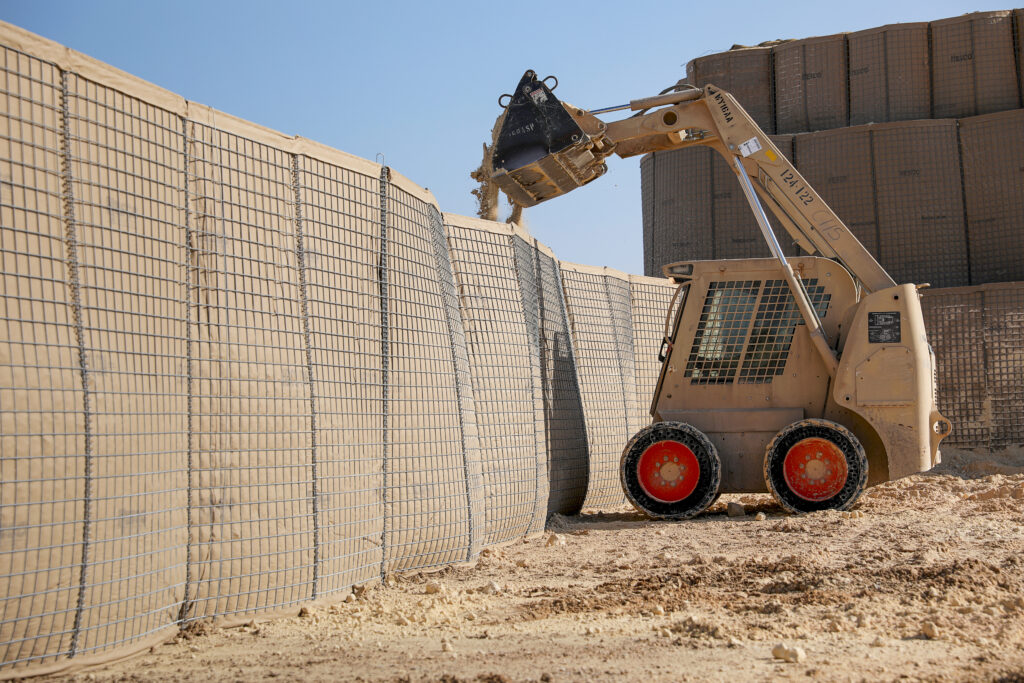
There are other prefabricated field fortifications such as the Modular Protective System from MH International, an engineering company, which has developed a lightweight structure designed to be embedded under- or above-ground, depending on the location. It consists of metal supports designed to carry up to 1.2 m of soil on the roof providing concealment and protection from large-calibre artillery rounds. It can also be fitted with emergency lighting and acoustic dampening, as well as with Kevlar screens to limit the path and spread of fragmentation. The system fits in an ISO container and is intended to be used as a command post or medical centre, as well as a fighting position.
Some of the solutions already mentioned – the Hesco and the Modular Protective System – can also be used to fortify an urban environment. However, there is much that can be done without prefabricated solutions. “In an urban environment, we need to move away from thinking about Pavlov’s house,” Beardsell said, referring to the legendary house in Stalingrad that was held by a small garrison of Soviet soldiers against successive and ultimately failed German assaults. “Instead, we need to think of resilience by hardening neighbourhoods using mouse holes and tunnels, sandbags, and disguising HQs inside buildings,” he continued.
Indeed, the efficacy of modern weapons make a prolonged struggle for a single building unlikely, assuming that permission to release large enough weapons can be granted, but it is worth noting that effective tactics – as used by Islamic State in the Philippines (IS-P) fighters during the 2017 Battle of Marawi – can derail an offensive urban operation, especially against unprepared troops. However, the general concept does appear valid, at least in situations where the defending force lacks the firepower and resources to hold the attacking air force and artillery support at bay.
Mouse holing is an effective way of turning a block of buildings into a fortification. It involves creating passages between buildings by blowing or breaking a hold through a dividing wall. This allows the defending force to move from one house to another, without leaving the building and exposing themselves to fire. This technique was used by the Islamic State during the 2016 Battle of Mosul, as well as by IS-P in the 2017 Battle of Marawi. Mouse holes allow fighters to reposition before they were overwhelmed or subjected to aerial bombardment. It also means that soldiers are not confined to moving down roads and streets, which make movement through a city predictable and risky. “If there is time and resources, you can also reinforce a building’s structure. For instance, you can add Acrow props to support a ceiling and add sandbags, supports, and wire to the building’s exterior,” Beardsell noted.

Even without prepared tunnels, such as those used by Hamas in Gaza, if a defending force is likely to be subject to air strikes or be observed constantly during a battle, then it will typically seek shelter underground. This might be in the form of trenches where the terrain allows, but in cities, using cellars or basements is a common feature. Many videos from Ukraine show drone command posts operating from cellars, and some accounts from Russian soldiers indicate that they use cellars for bed-down locations away from the frontline. Chechen fighters in Grozny during 2000 also used basements and a network of tunnels to move underground, concealed from Russian forces. They also conducted extensive mouse holing, enabling them to manoeuvre through buildings and re-emerge in new, previously-cleared locations, in much the same way that Israeli forces experienced in Gaza.
Holding ground
Overall, the state of modern defences shows some signs of innovation; systems such as the Universal Battle Trench, and the well-proven Hesco gabions appear to be capable of quickly providing forces with effective defensive structures often better than the hand-made alternatives that they would be able to produce. However, the basics of modern field defences are essentially the same as they were in the 1800s. The focus is on protecting friendly troops and denying the enemy the ability to manoeuvre while retaining or even enabling the defending force’s ability to manoeuvre as seen in some recent urban battles. This makes them a valuable skill-set to learn and maintain, especially in terms of basic soldiering skills such as digging and camouflaging a trench. Finally, it is also worth noting that fortifications or fortified positions, even those that use prefabricated defences, may be quickly destroyed by precision guided munitions (PGMs). Russian glide bombs in Ukraine, for example, can be capable of levelling a large apartment block, or otherwise overwhelming the soldiers defending it. In Mosul, MQ-9 Reaper UAVs and M109 self-propelled howitzers (SPH) were able to bring precision fires to bear very quickly, destroying even well-prepared buildings. This may not always happen, but remains a distinct possibility and, with the increase in drones, Western forces must now plan to a much greater degree for aerial and drone-delivered munitions.
Sam Cranny-Evans







